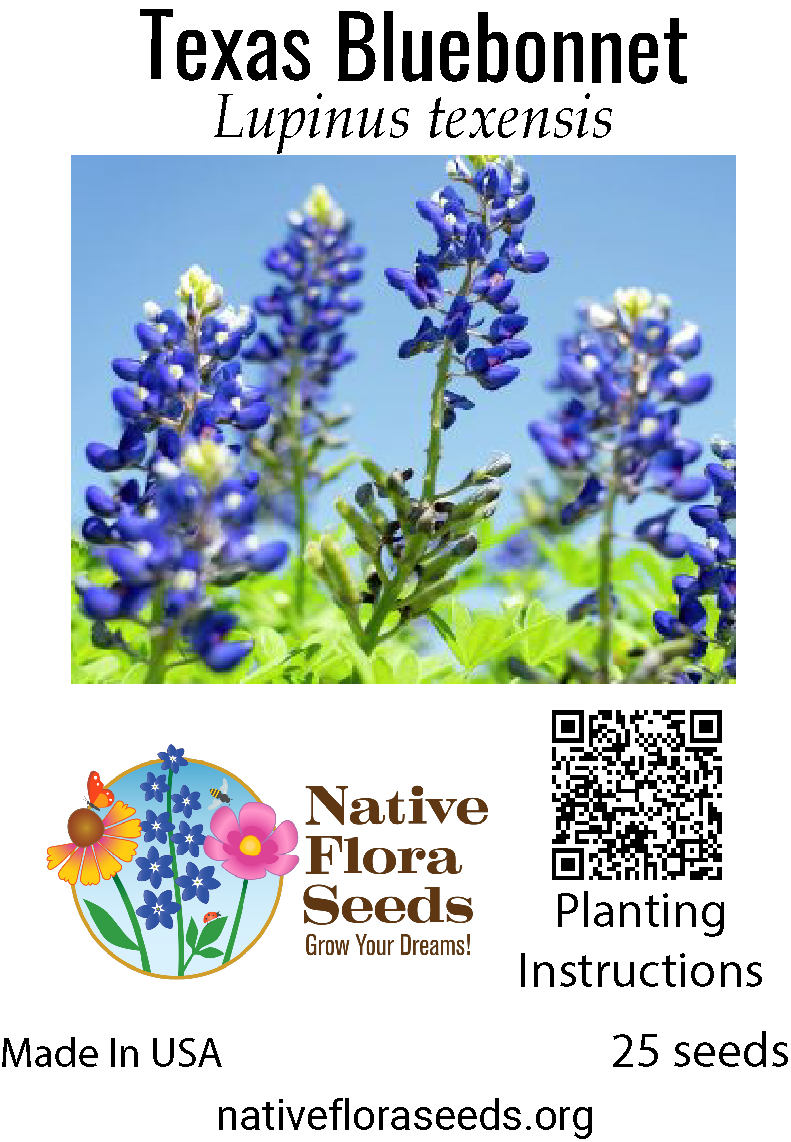Site Selection
Sunlight: Bluebonnets need full sun (at least 8-10 hours per day) to thrive and produce abundant blooms.
Soil: They prefer well-drained soil, ideally with a slightly alkaline pH (around 7.5). They can tolerate various soil types, including sandy, loamy, and even rocky soils, as long as they are not waterlogged.
Planting Outdoors
Fall Planting:
This is the ideal time to plant bluebonnet seeds in most regions.
Sow seeds from September to November, with early October being optimal in many areas.
Prepare the soil by loosening it and removing any weeds or debris.
Scatter seeds on the soil surface, ensuring good seed-to-soil contact. Lightly rake or press them in, covering them with no more than 1/8 inch of soil.
Gently water the area, keeping it moist until seeds germinate.
Spring Planting:
Sow seeds after the last frost has passed.
However, spring planting is generally less reliable than fall planting due to warmer temperatures and less time for root development before summer heat.
If planting in spring, it's crucial to scarify and stratify the seeds to improve germination rates (see below).
Starting Seeds Indoors
Timing: Start seeds 6-8 weeks before the last expected frost in your area.
Containers: Use seed starting trays or small pots with drainage holes.
Soil: Fill containers with a seed starting mix.
Planting: Sow seeds about 1/4 inch deep and lightly cover with soil.
Watering: Keep the soil consistently moist but not waterlogged.
Light: Provide ample light, either from a sunny window or grow lights.
Transplanting: Once seedlings have developed a few sets of true leaves and the weather is warm enough, transplant them outdoors. Space plants about 10-12 inches apart.
Stratification and Scarification
Stratification:
Bluebonnet seeds benefit from stratification (cold treatment) to break their dormancy and improve germination.
For spring planting, stratify seeds by placing them in a sealed plastic bag with a slightly damp paper towel or vermiculite. Store the bag in the refrigerator for 4-6 weeks before planting.
Scarification:
Scarification (scratching or nicking the seed coat) is also recommended, especially for spring planting.
This can be done by gently rubbing the seeds with sandpaper, nicking them with a knife, or soaking them in hot water (not boiling) for a few hours.
Watering
Water regularly during the first growing season to establish roots.
Once established, bluebonnets are drought-tolerant and need minimal watering.
Allow the soil to dry out slightly between waterings. Overwatering can lead to root rot.
Maintenance
Bluebonnets are low-maintenance plants and generally do not require fertilization.
Deadheading spent flowers is not necessary as they will produce seed pods for the next generation.
Allow plants to self-seed to maintain a continuous display of blooms in subsequent years.
Invasiveness
Bluebonnets are not considered invasive. They are native to Texas and have naturalized in some other parts of the southern United States.
Additional Tips
Bluebonnets are a beautiful addition to wildflower gardens, meadows, and naturalized areas.
They attract butterflies and other pollinators.
These plants are deer-resistant.
Remember that bluebonnets are the state flower of Texas, so they hold a special place in many gardens and hearts!



